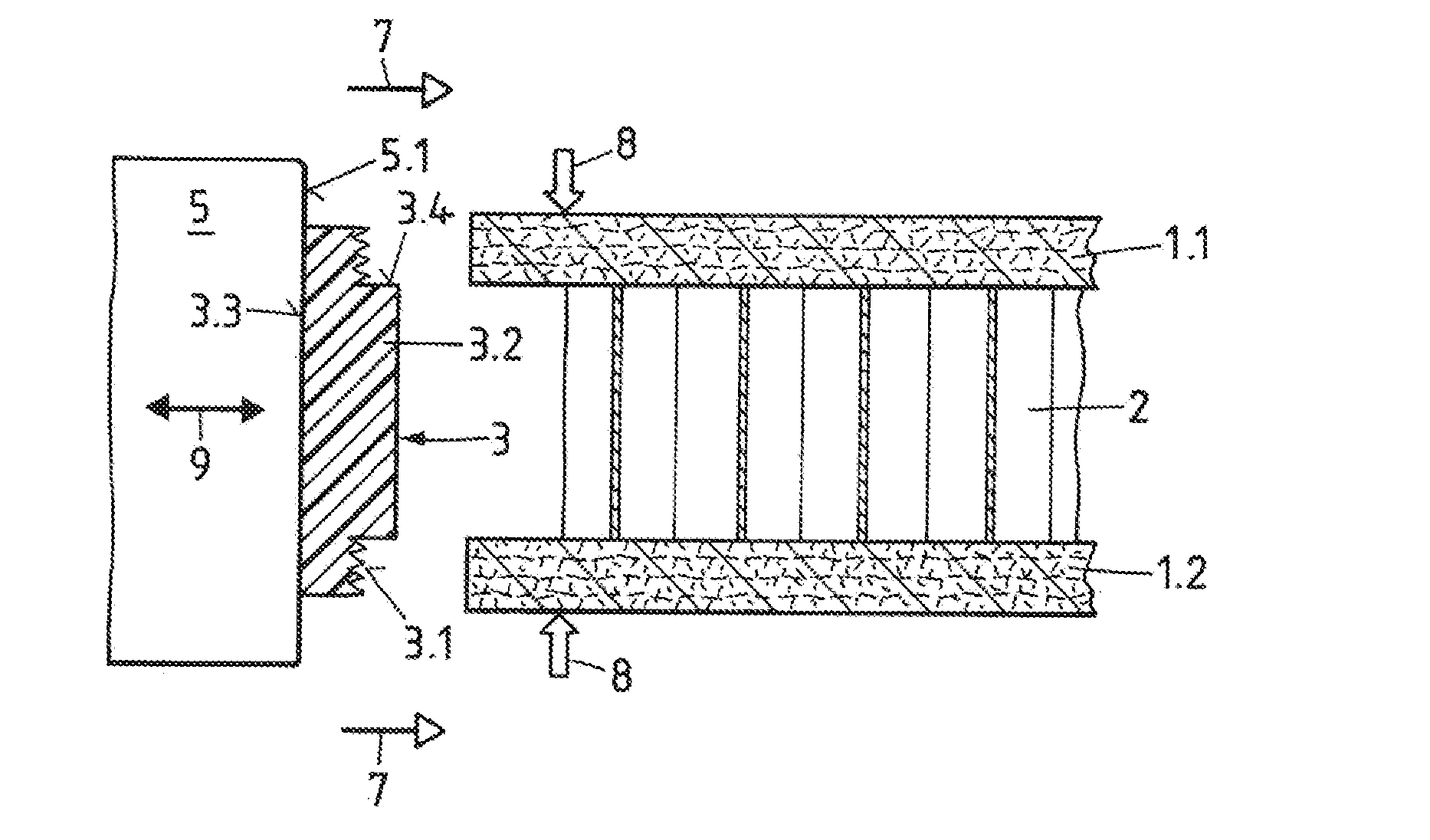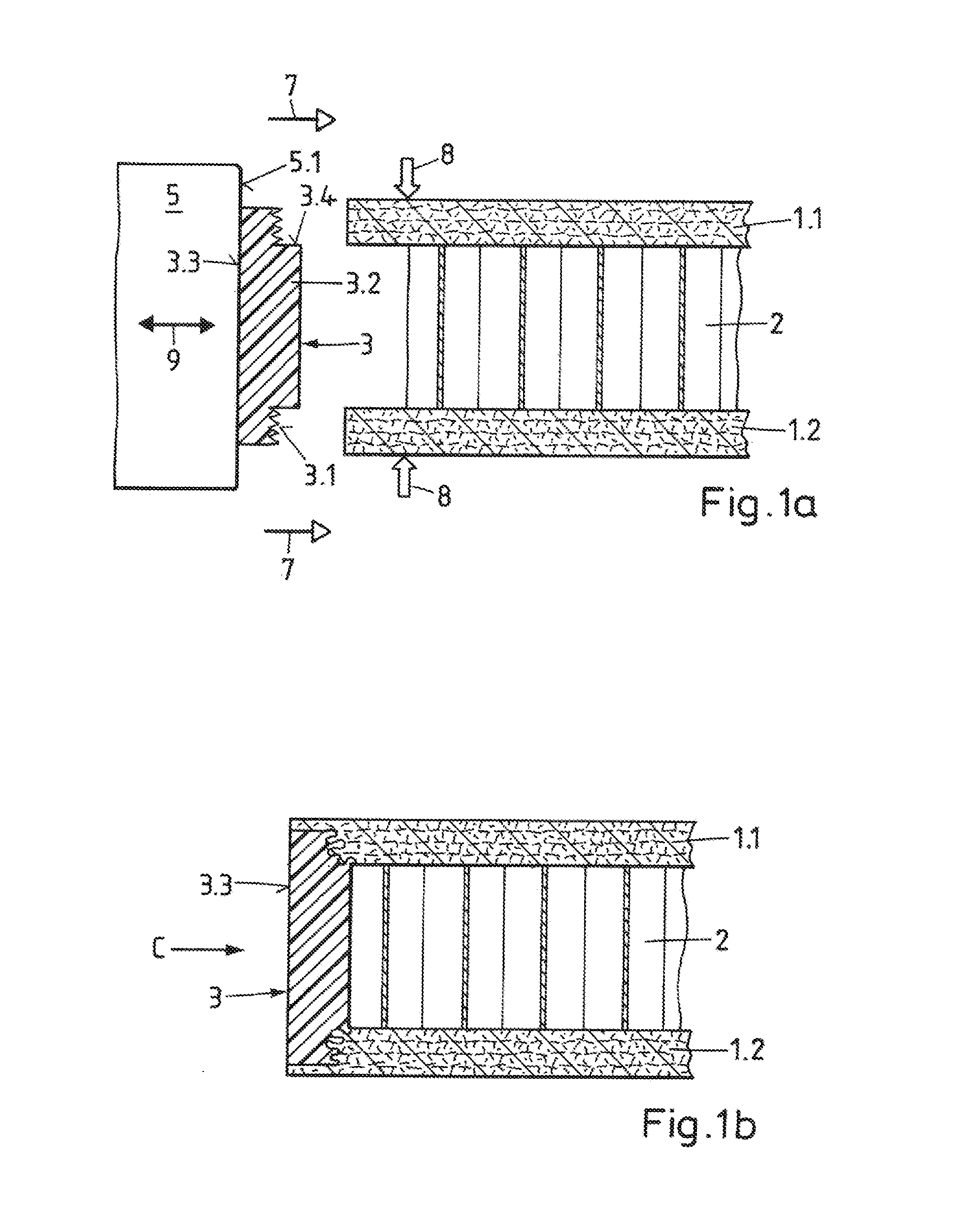Method of fastening an edge structure to a construction element
a construction element and edge structure technology, applied in the direction of paper/cardboard containers, other plywood/veneer working apparatus, furniture parts, etc., can solve the problems of reducing the thickness tolerance of the lightweight building board, reducing the overall weight of the board, so as to achieve the effect of ensuring the thickness tolerance and avoiding the for
- Summary
- Abstract
- Description
- Claims
- Application Information
AI Technical Summary
Benefits of technology
Problems solved by technology
Method used
Image
Examples
Embodiment Construction
[0045]In the illustrative examples of FIGS. 1-8b, the construction element is a lightweight building board, and the edge structure is an edge support for fastening an edge, such as a decorative edge thereto.
[0046]The cut-to-size lightweight building board that can be seen in FIGS. 1a-1d comprises—as also in the embodiments described below—an upper cover layer 1.1 and a lower cover layer 1.2. The cover layers are produced from a derived timber material; for example, they are formed as particle boards, fiberboards or laminated (plywood) boards. The invention is also suitable, however, for the application where the cover layers are made of other materials, under some circumstances materials that are not wood-based, which have sufficient mechanical strength and dimensional stability and comprise structures that are suitable for interpenetration with liquefied thermoplastic material, for example plastic- or metal-based materials, in particular also composite materials.
[0047]The thickness...
PUM
| Property | Measurement | Unit |
|---|---|---|
| thicknesses | aaaaa | aaaaa |
| thicknesses | aaaaa | aaaaa |
| thicknesses | aaaaa | aaaaa |
Abstract
Description
Claims
Application Information
 Login to View More
Login to View More - R&D
- Intellectual Property
- Life Sciences
- Materials
- Tech Scout
- Unparalleled Data Quality
- Higher Quality Content
- 60% Fewer Hallucinations
Browse by: Latest US Patents, China's latest patents, Technical Efficacy Thesaurus, Application Domain, Technology Topic, Popular Technical Reports.
© 2025 PatSnap. All rights reserved.Legal|Privacy policy|Modern Slavery Act Transparency Statement|Sitemap|About US| Contact US: help@patsnap.com



